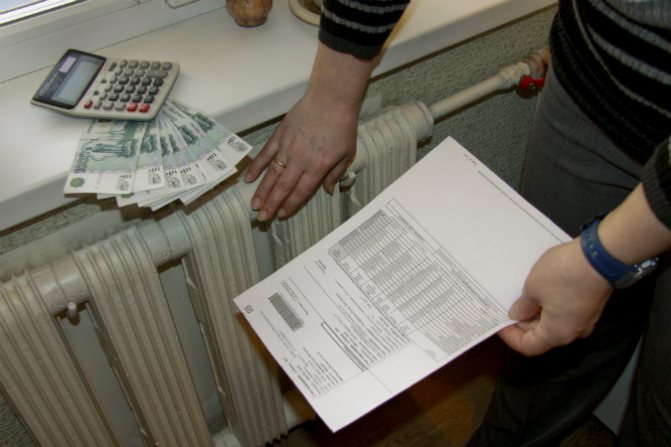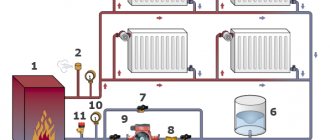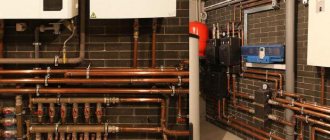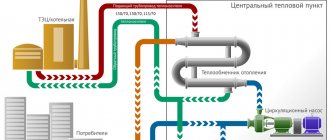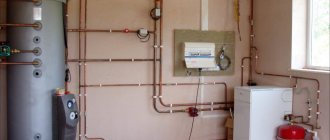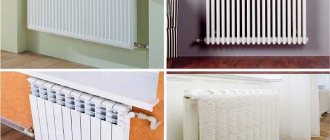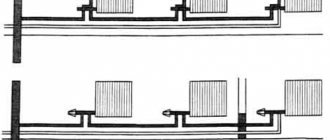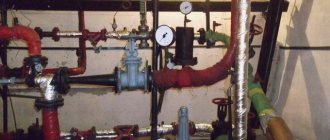The most common way to provide thermal energy to apartment buildings is central heating. Heating medium supply carried out by means of heating mains from central boiler houses or CHP. The heated liquid is taken over by the heat point... It produces primary heat metering, provides regulation of the supply, distributes it to consumers. There are other options for heating apartments. Among the most common: individual heating of an apartment building, heating of a single apartment.
Each scheme has advantages and disadvantages, the choice of the most convenient depends on a number of factors: the proximity of highways, their condition, the expediency of using the energy of remote boilers. In any case, the design of new communications, the reconstruction of old networks should include the development of mechanisms for regulating the supply of heat to apartment buildings. This is not so much a matter of comfort as of saving energy resources.
Automation of the process of regulating heat supply MKD
The existing system of transportation and distribution of heat energy is far from ideal. Its imperfection is especially acute during the off-season. It often happens that the weather is stable outside the window, the batteries stubbornly heat the already warm rooms. This situation is due to the fact that the only link in the chain of enterprises, communications and coolant supply devicesthat has the ability to influence the heat supply process is a boiler house or a CHP. But even they do not have the ability to flexibly regulate, they do not have mechanisms to instantly respond to changes in the weather.
Ideal option regulation of heat supply in an apartment building there will be such a project, during the implementation of which it becomes possible to regulate the temperature of each room separately. This solution makes it possible to provide individual metering of heat supply, which in turn makes it possible for residents not to pay for heat that simply flies out through the open vents.
Individual metering of heat supply allows the consumer to carry out regulation of the amount of consumed heat energy... This can be achieved by setting a lower temperature for rooms that are not in use and raising it as needed.
Heat regulation can be realized by shutting off the taps on the radiators. In addition, you can entrust the process of regulation to automation. Modern industry offers various devices that allow you to regulate the room temperature. The most common of these are radiator thermostats. These are devices consisting of a thermostatic head and a valve. The sensor measures the room temperature, controls the valve. Depending on the presettings, the valve increases or decreases the heating medium flow by adjusting the heating level.
Due to the possibility of precise adjustment, this device allows you to regulate the microclimate inside the building, maintain a comfortable atmosphere, and save energy. There are different types of radiator thermostats. Most of them allow you to set the temperature value that the owner of the room wants to receive. There are more complex models.Some of them allow you to set the temperature for different times of the day, for example, they can limit the supply of heat during the day, when there is no one in the apartment, and in the late afternoon they can warm the room to a comfortable level.
To manage and help: who should regulate the indoor heating system
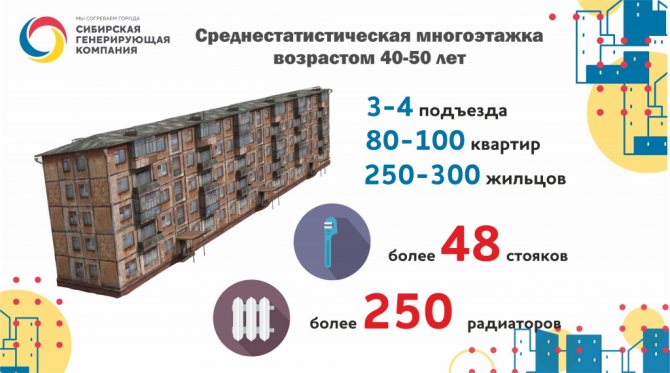
If we translate these data into exact figures, it turns out that in a standard five-story "socket" there can be 48 risers and more than 250 radiators for 4 entrances. The owners themselves and the management organizations chosen by them for this large farm are responsible for this. But what if the heating system in a high-rise building malfunctions despite the reverent attitude of residents to their apartment? After all, the renovation has recently been done, the walls have been insulated, the windows have been changed, but the apartment is cool, and the neighbor's is warm.
What to do?
When it is warm in one house and even in one entrance of the neighbor on the right, and the neighbor on the left is cold, then in such a situation it is the internal heating system that needs to be regulated.
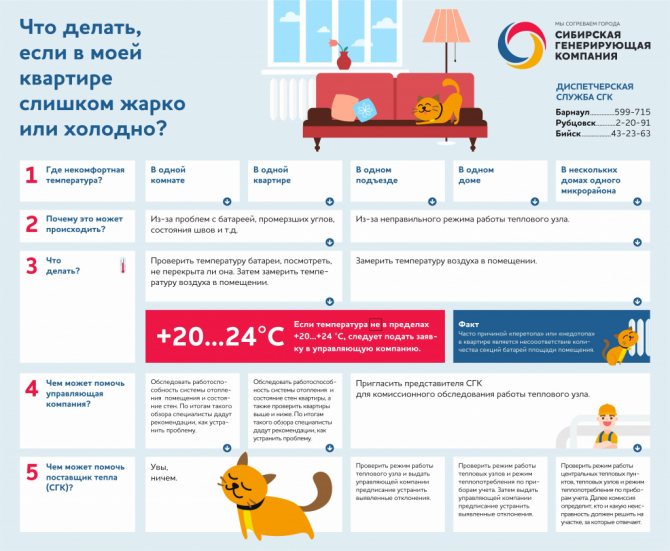

There are situations when power engineers must adjust the supply of the resource to the house.
Andrey Kolyada
managing director
“It would be much easier for the owners if there were government co-financing to replace the risers and radiators. For example, under the federal program, we have recently replaced the filling of the heating agent in houses. But this is not enough, because the main problem is clogged risers. In order for the coolant to flow freely from the heat source to the consumers, clean pipes are needed. And this means the pipes must be new, which, with proper operation and annual flushing, will last a long time "
When everything works fine on the district networks, and it is cold or hot in the apartment, the specialists of the management organization take over. They begin a survey of the apartment, often in conjunction with the SGK inspectors. The results of such an inspection of in-house heating devices are usually the same - an inoperative riser, clogged radiators, whose service life has long expired.
Good example
Andrey Kolyada
managing director
“It would be much easier for the owners if there were government co-financing to replace the risers and radiators. For example, under the federal program, we have recently replaced the filling of the heating agent in houses. But this is not enough, because the main problem is clogged risers. In order for the coolant to flow freely from the heat source to the consumers, clean pipes are needed. And this means the pipes must be new, which, with proper operation and annual flushing, will last a long time "
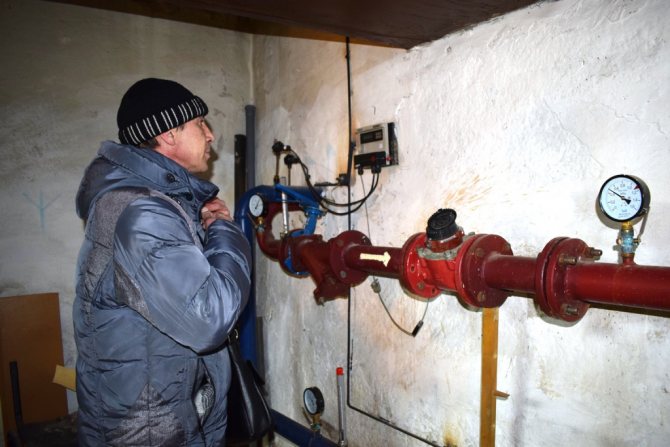

Let's go back to the numbers
Replacing one riser for all five floors will cost 15-17 thousand rubles. Turning back to mathematics, we get 15,000 x 48 = 720,000. The sum is significant, therefore, tenants, as a rule, change the heating pipelines in the house out of urgent need, when the riser is already completely out of order.
Andrey Kolyada
managing director
“It would be much easier for the owners if there were government co-financing to replace the risers and radiators. For example, under the federal program, we have recently replaced the filling of the heating agent in houses. But this is not enough, because the main problem is clogged risers. In order for the coolant to flow freely from the heat source to the consumers, clean pipes are needed. And this means the pipes must be new, which, with proper operation and annual flushing, will last a long time "
According to representatives of management organizations, this year the number of requests from consumers has significantly decreased. For example, at the beginning of the 2018-2019 heating season, the manager had six apartment buildings that required adjustment. Together with power engineers, the specialists of the management company carried out the necessary work on each of these high-rise buildings.During the autumn-winter period, there were no complaints about the cold.
It is solely the owners of the apartments who decide to change or not change the heating pipelines in the house at a general meeting of residents. But managing organizations should carry out this work and properly service the renewed economy. Only they have legal rights to do so. Power engineers, in turn, are obliged to fully service the city heating networks and help, if necessary, "managers".
Only with such a division of responsibilities "owner - management company - heat supply organization" will the consumer receive a high-quality resource.
Heat regulation in individual heating systems
The concept of individual heat supply means that the boiler room is located directly in an apartment building. For its placement, basements, basements are used, modular boiler rooms are also used, which are placed on the roofs of buildings.
The implementation of individual heating in apartment buildings is a rather expensive project. It requires a significant investment, however, it provides an opportunity to save money. Length of mains for individual heat supply limited by the size of the building, which entails small heat losses during transportation. In addition, easy access to the boiler room equipment makes it possible to more efficiently regulate the heat supply to the apartment building.
A separate case of individual heat supply is the installation of autonomous heating in the apartments of an apartment building. For this, boilers are used, most often gas boilers, which are part of a closed heating system. Such a solution makes it easy to automate the process by using devices that can regulate the temperature of a single room.
Actions in case of non-compliance with heating standards
What to do if the apartment is too cold or too hot? If there is a clear deviation of temperatures from the optimal temperature regime, the tenant can, independently or together with neighbors, invite the employees of the management company to take measurements. The management company must respond to every request from residents, taking measurements on demand.
If the appeal to the management company did not produce the desired effect and did not lead to an improvement in the situation, the consumer should file complaints with the local authorities of the housing inspection and Rospotrebnadzor. The last step in the fight for comfortable living conditions is going to court with a claim against the management company.
It is important to know: Gasification of an apartment building: requirements of SNIP 2020
Single-pipe version of MKD heat supply
The simplest option for heating an apartment building is a one-pipe system. The heat carrier is fed from the bottom up, it fills the radiators, gives off heat and moves to the next consumer. This system has a number of significant disadvantages. One of the main ones is significant heat loss during transportation. The last consumers in the chain receive a slightly heated liquid.
In addition, the one-pipe system makes it almost impossible to regulate the heat supply in an apartment building. It is impossible to install taps or automatic control devices on the supply pipelines, since a decrease in the flow rate inside any of them will affect the entire system. You also need to remember about possible emergency situations. A one-pipe system does not allow one of its components to be replaced without completely draining the water from the system. A minor breakdown may result in stopping the supply of heat to all consumers.
Reasons for using a temperature chart
The basis for the operation of each boiler house serving residential, administrative and other buildings during the heating period is the temperature schedule, which indicates the standards for the indicators of the coolant, depending on what the actual outside temperature is.
- Scheduling makes it possible to prepare heating for a drop in outdoor temperatures.
- It is also energy saving.
ATTENTION! In order to control the temperature of the coolant and be eligible for recalculation due to non-compliance with the thermal regime, the heat sensor must be installed in the centralized heating system. Metering devices must be checked annually.
Modern construction companies can increase the cost of housing by using expensive energy-saving technologies in the construction of multi-apartment buildings.
Despite the change in construction technologies, the use of new materials for insulation of walls and other surfaces of the building, compliance with the temperature of the coolant in the heating system is the best way to maintain comfortable living conditions.
Heat supply and regulation in a two-pipe system
This option is more complicated, but it allows you to significantly expand the capabilities of the mechanisms regulation of heat supply to each consumer... The difference between the system is that the coolant that has given up part of the energy does not continue to move along the same pipe to the next consumer, it flows into the second pipe, the "return". Due to this, the coolant has approximately the same temperature all the way, for each radiator.
It is this solution that makes it possible to carry out regulation of heat supply in an apartment buildingusing each individual radiator. The temperature can be controlled either manually, with a valve, or automatically, using thermostats.
Regardless of how the heat supply is implemented, the system must include devices for automatic metering and regulation of heat supply in an apartment building. This allows not only to provide housing with the heat necessary for life, but also to significantly save energy resources.
Rules for crimping an apartment building
Federal Law of July 27, 2010 N 190-FZ (as amended on July 29, 2017) "On Heat Supply" (as amended and supplemented, entered into force on August 10, 2017)
Article 20. Checking readiness for the heating season
1. Checking readiness for the heating season is subject to:
1) municipalities;
2) heat supply organizations and heat network organizations;
3) consumers of heat energy, whose heat-consuming installations are connected (technologically connected) to the heat supply system.
(as amended by Federal Law of 30.12.2012 N 318-FZ)
2. Verification of the preparedness of municipalities for the heating season and investigation of the causes of accidents in heat supply shall be carried out by the federal executive body authorized to exercise federal state energy supervision. Verification of the readiness of heat supply organizations, heating network organizations and consumers of heat energy for the heating season is carried out by local governments, and in price zones of heat supply by local governments together with a single heat supply organization. Investigation of the causes of emergency situations in heat supply is carried out in accordance with the procedure established by the Government of the Russian Federation.
(as amended by Federal Laws of 01.12.2014 N 404-FZ, of 28.11.2015 N 357-FZ, of 01.05.2016 N 132-FZ, of 29.07.2017 N 279-FZ)
3. Checking the readiness for the heating season is carried out by the bodies specified in part 2 of this article, in accordance with the rules for assessing the readiness for the heating season, which are approved by the federal executive body authorized to implement the state policy in the field of heat supply, and which, in particular, establish categories of heat consumers subject to this verification, requirements for these consumers and criteria for the reliability of their heat supply, taking into account climatic conditions, requirements for heat network organizations, heat supply organizations on taking measures to ensure the reliability of heat supply to consumers.
four.Checking the readiness for the heating season of municipalities is carried out, in particular, in order to determine the existence of an action plan for eliminating the consequences of emergencies using electronic simulation of emergencies, a system for monitoring the state of the heat supply system, and a mechanism for operational dispatch control in the heat supply system.
5. Checking the readiness for the heating period of heat supply organizations, heating network organizations is carried out in order to determine the compliance of heat sources and heating networks with the requirements established by the rules for assessing readiness for the heating season, the existence of an agreement on the management of the heat supply system, the readiness of these organizations to fulfill the schedule of heat loads, to maintain the temperature schedule approved by the heat supply scheme, compliance with the criteria for the reliability of heat supply established by technical regulations, and heat sources also in order to confirm the availability of standard fuel reserves. Heat supply organizations and heating network organizations, in addition, are obliged to:
1) ensure the functioning of the operational, dispatching and emergency services;
2) organize the adjustment of the heating networks belonging to them;
3) monitor the modes of consumption of thermal energy;
4) ensure the quality of coolants;
5) organize commercial accounting of purchased heat energy and sold heat energy;
6) ensure the quality control of the construction of heating networks belonging to them;
7) ensure trouble-free operation of heat supply facilities;


6. Checking the readiness of heat consumers for the heating period is carried out in order to determine their compliance with the requirements established by the rules for assessing readiness for the heating season, including the readiness of their heat-consuming installations for operation, as well as in order to determine their readiness to ensure the regime specified in the heat supply agreement consumption, absence of debt for the supplied heat energy (power), heat carrier, organization of commercial metering of heat energy, heat carrier.

